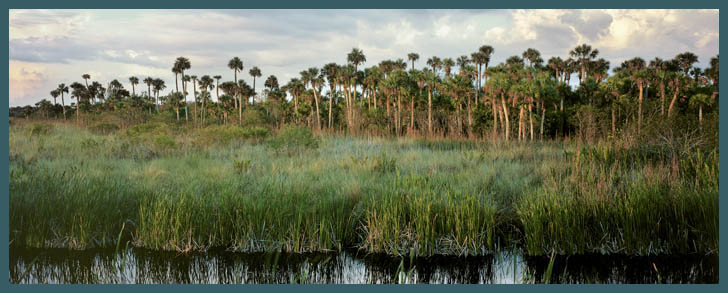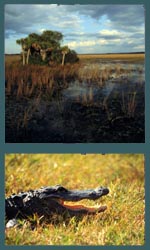|
Florida Everglades
It's A Bird; It's A Plane; No, It's a Mourning Dove!
by Maureen Sullivan-Hartung
One of the most common and popular backyard birds is the Mourning Dove; whose soulful "cooing" sounds are heard early in the morning. The Mourning Dove, Zenaida Macroura, is a member of the dove family, Columbidae. As one of the most abundant and widespread birds in North America, it is also referred to as the Rain Dove as well as the American Mourning Dove. Sadly, it is also at the top of the list for game birds, with up to 70 million birds shot annually for both sport and meat in the United States. Doves and pigeons belong in the same family and understandably are often interchanged.
Generally muted in color, males and females are similar in appearance, in shades of light grey and brown. Approximately 12-inches in height, Mourning Doves weigh anywhere from four to six ounces. Their legs are reddish in color and short and they have what is called perching feet - with three toes forward and one reversed.
There are five known subspecies of the Mourning Dove, and all look similarly alike. They typically feed on seeds found on the ground. Preferring wide open habitats such as farms, grassland and prairies, they avoid the thick forests and swamps, preferring to nesting in trees in the cities or near farmsteads. A strong flier, known for its unusual whistling sound upon take-off and landing, it is capable of speeds up to 55 miles-per-hour.
During their courtship, the male will approach the female with a bobbing head, puffed out breast and loud calls. They will "shop around" for a suitable nest which the female builds with help from the male. The incubation period is two weeks. The species is generally monogamous, one spouse per lifetime, and usually produces two babies - known as squabs - per brood. Prolific breeders, they have been known to raise up to six broods per year. Both male and female incubate and care for their young. And amazingly, both sexes produce "crop milk" (not really milk) a highly nutritious substance for their young, which is secreted from the lining of their crop.
Of the different varieties of doves/pigeons here in Florida, you might also catch sight of the Rock Dove, a native of Europe and extensively used in racing back in Europe. The Ground Dove is the smallest in the states, and as its name suggests is usually found on the ground. The Ringed Turtle Dove has formed a small colony in nearby St. Petersburg. The tips of its flight feathers are much darker than the other breeds. White-Crowned Pigeon are common among the mangrove islands of the Keys during the summer months. These pigeons are not legal game here in Florida. All are year-round residents of Florida, according to Florida's Fabulous Land Birds book.
With the exception of books on caring for pet doves, the only other book I found for additional information was Doves by Michael W. Gos, 1981.
END
The ABCs of the Florida Landscape is written by freelance writer Maureen Sullivan-Hartung who has resided in Naples for nearly 30 years and loves learning about all aspects of the local flora and fauna. Another passion of hers is local history and she authored a book in November 2010, titled, Hidden History of Everglades City & Points Nearby, published by The History Press in South Carolina. Check her website for the book's availability and/or additional information about the author at: www.maureenwrites.com
msh42011
|


